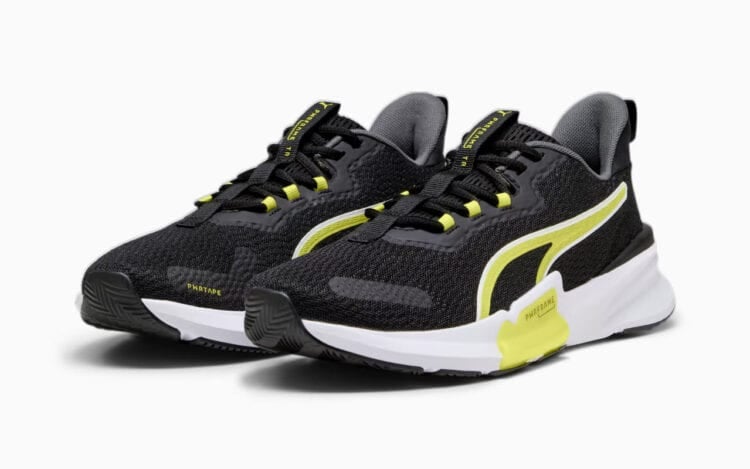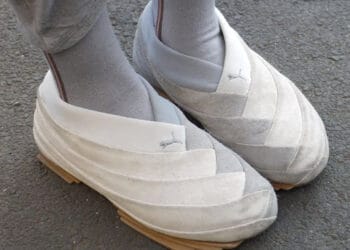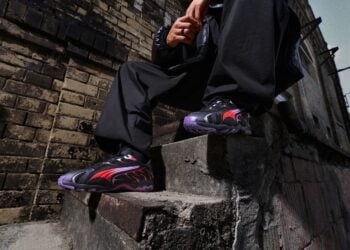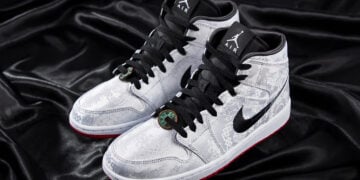It’s that time of year again when many want to improve their fitness and get back into shape as we push into 2024. Once you’ve decided on your goals for the near and long-term future of your health, your next step will be to choose your activity. For some, this might include hitting the gym or getting out onto the street for a walk or run; for others, it might just mean some basic workouts. While many shoes have particular capabilities for those more seasoned athletes, finding a well-rounded trainer to fit your everyday programme is a great option. The PUMA PWRFRAME TR 2 is one such training shoe, providing flexibility and stability across various activities.
RELATED: PUMA ForeverRUN NITRO Review – When Stability is Key
PWRFRAME TR 2 Build and Design
I’ve always believed that trainers don’t need to be stylish. Practicality is the order of the day. However, when you’re hitting the gym or the streets, adding style doesn’t hurt when all the tickboxes for practicality have been checked.
The PUMA PWRFRAME TR 2 trainer has a sleek aesthetic. While it has a minimalistic approach to its design, the lines throughout the silhouette create a forward-moving appearance. The upper is crafted in a textile material designed to allow wearers to move and change direction freely while also adding ideal ventilation. For a clean look, it has a predominantly black upper, contrasted against the white midsole.
The brand’s Formstrip is featured in an outline, adding to its minimalist approach. This outline has a rubberised finish, resembling the rubber outsole underneath. The Formstrip is added to both the medial and lateral sides, which hasn’t always been the case with other PUMA trainers.
Its Yellow Burst colour on the Formstrip creates a bold, contrasting look, further highlighted by the surrounding white outline. Several other pops of colour featuring the Yellow Burst are visible on the eyestays, text and the PWRFRAME midsole.
As stated, it’s a minimalist design approach featuring clean lines and only three colours. While it may not be for everyone, this approach suits me perfectly.
RELATED: PUMA Fast-Trac Nitro Review – Next-Generation Trailing
Quality
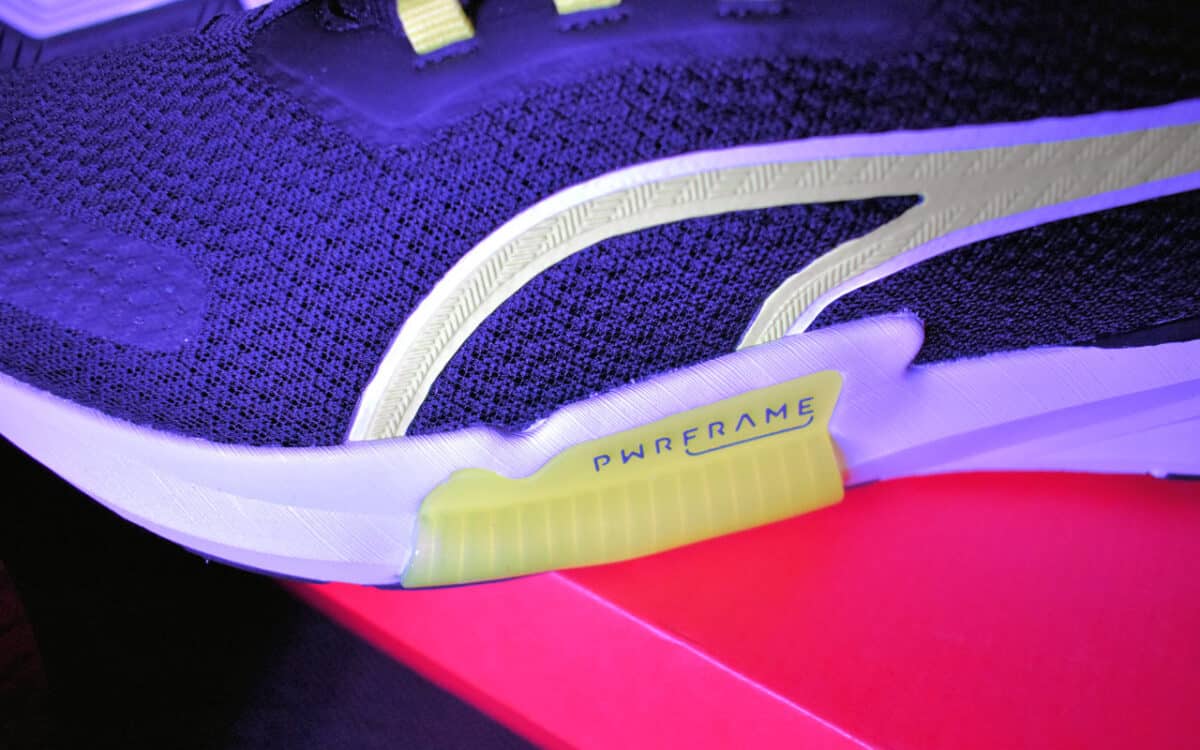
This being the second iteration of the PWRFRAME trainer, PUMA has improved on several key features to add to the performance. In addition, its quality has also improved, providing peace of mind for buyers looking for a trainer that can be pushed to its limits as you are through yours.
The first addition to the PUMA PWRFRAME TR 2 is the use of PUMA’s proprietary PWRTAPE. It uses this technology in crucial impact and high-wear areas across the silhouette. This is featured in three areas: two on the front toe and a third on the heel tab. There is a fourth if you count the area surrounding the eyestays, which provides additional security for your movements with pressure on the laces.
To the touch, it feels premium as well. The textile upper has a plush feel, and the soft rubber on the midsole adds to the quality feel. This quality also extends to the interior of the trainer, from the collar to the thick insole.
PUMA PWRFRAME TR 2 Performance and Comfort
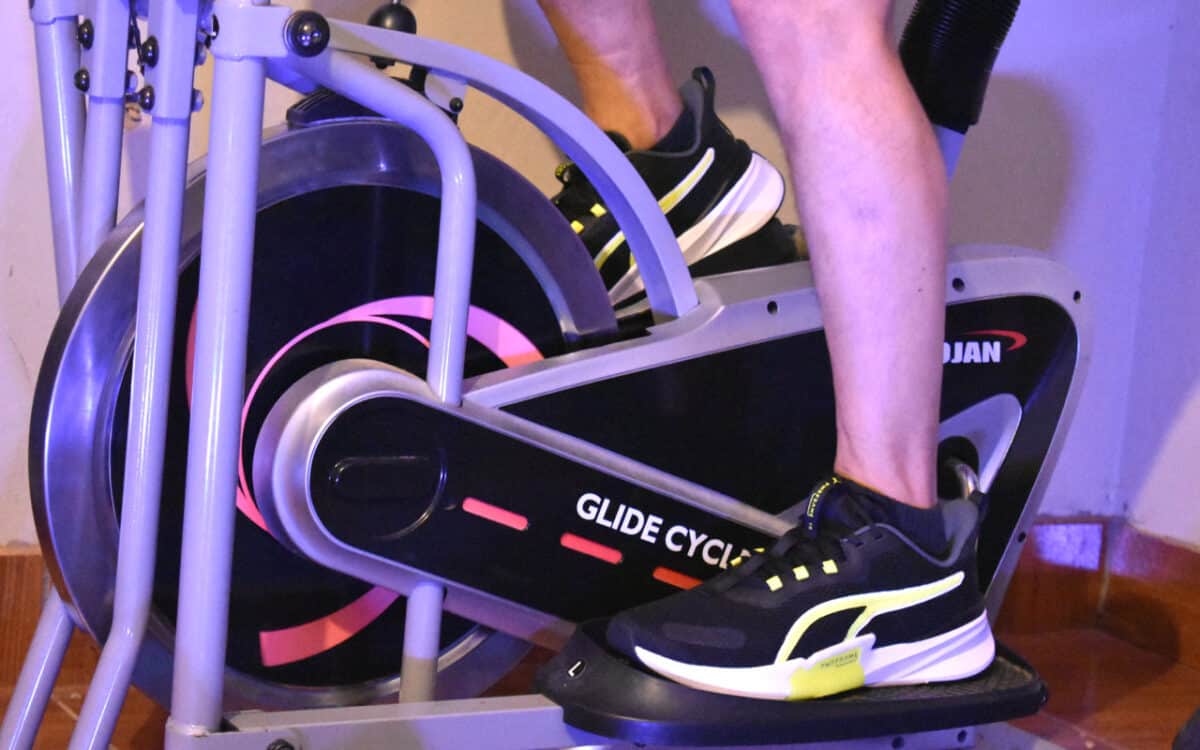
The PUMA PWRFRAME TR 2 is a versatile trainer. I tested it across a few activities to pinpoint its strengths, including light to heavy training and street runs. The PWRFRAME technology, a relatively large plastic TPU frame, is notable on both trainers’ lateral sides. This runs through the midsole on the forefoot, with its ends on the medial side just slightly visible.
The TPU is also the trainer’s namesake, which suggests where the critical aspect of its design lies. This implies that it was designed for training programmes featuring plenty of movement. This includes HIIT workouts, some yoga and aerobics. While it works for light running, it’s not ideal for a seasoned runner looking to improve on times or even stability runs on training days. Given its design, it’s not recommended for lifting exercises, especially with its softer textile upper.
Unlocking its full potential comes from HIIT workouts, with plenty of sideways movements, jumps and switching of various activities. The PWRFRAME TPU absorbs most of the impact from the lateral forces, even allowing for a level of return. With this support on the sideways movements, you can feel the difference on trainers that don’t have this same approach, feeling much clumsier.
Added to the PWRFRAME design are the PROFOAM and PUMAGRIP technologies. The PROFOAM technology provides cushion upon landing, making it easier to perform jumping actions during your workout. The EVA construction adds some bounce, allowing you to propel your jumps neatly while also not taking too much impact on your ankles when landing.
The PUMAGRIP rubber on the outsole provides all-surface traction to aid these jumps and sideways movements further. It’s much harder than the other PUMA running shoes I’ve reviewed over the past year. As a result, you can feel each movement as you toe off on the run or kick off for a jump. However, this adds more precise movements, allowing you to add better timing in bursts for those continuous HIIT movements.
I found that the PUMA PWRFRAME TR 2 trainers have a narrow design. While it does work for me during shorter workouts, I did feel a bit more pressure as each workout progressed. This means those with a broader foot may not find these all that comfortable, especially in the forefoot region. The tongue, on the other hand, is quite loose. When you perform too many sideways jumps in a row, it will slide either left or right and require repositioning occasionally during the workout.
Is the PUMA PWRFRAME TR 2 Worth It?
The performance of the PUMA PWRFRAME TR 2 is well-rounded for beginners and novice athletes. It works best for HIIT workouts as it shines with its sideways movements, absorbed by the second iteration of PWRFRAME technology on the lateral sides and under the forefoot. If you’re looking for more professional trainers for specific activities, PUMA has a wide range of shoes to meet your targets accordingly.
The Review
PWRFRAME TR 2
The performance of the PUMA PWRFRAME TR 2 is well-rounded for beginners and novice athletes. It works best for HIIT workouts as it shines with its sideways movements, absorbed by the second iteration of PWRFRAME technology.
PROS
- Lightweight upper
- Minimalist design
- PWRFRAME midsole great for HIIT
CONS
- Narrow forefoot
- Loose tongue


